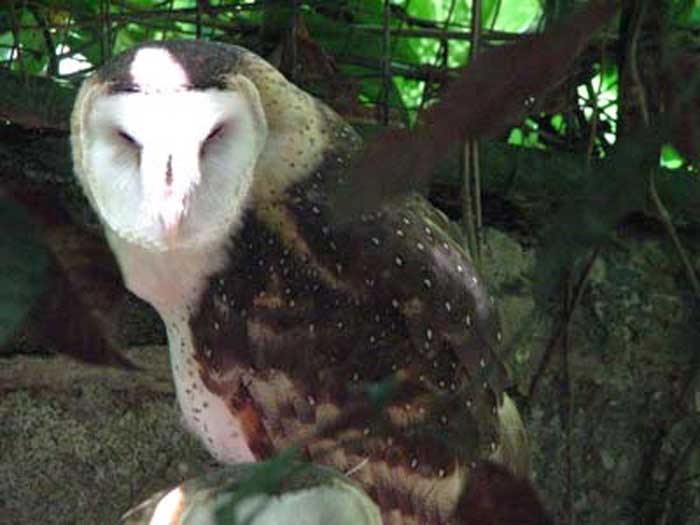Otus megalotis (*) Cladus: Eukaryota Name Otus megalotis (Walden, 1875) Reference Transactions of the Zoological Society of London 9 p.145 Vernacular names
The Philippine Scops Owl (Otus megalotis) is a common owl, endemic to the Philippines, belonging to the family of the typical owls Strigidae. It is one of the sixteen owl species in the Philippines. This owl grows to a length of 20 cm. Their big forward-facing eyes are dark with an orange-red rim. Their crown, ear tufts and feathers are dark brown, with dark streaks above. The facial disk has a dark rim. The forehead has a whitish pale color. They have big erect ears, as their name "megalotis" indicates. The Philippine Scops Owl lives alone or in monogamous pairs. They breed throughout the year, resulting in 1-2 eggs. They nest in trees holes of forests of the Philippine lowlands. They can equally be found in the pine forests of Luzon. It preys at night on insects. Its hooting call sounds like "oik oik oik". References * BirdLife International (2004). Otus megalotis. 2006. IUCN Red List of Threatened Species. IUCN 2006. www.iucnredlist.org. Retrieved on 11 May 2006. Database entry includes justification for why this species is of least concern Source: Wikipedia, Wikispecies: All text is available under the terms of the GNU Free Documentation License |
|

